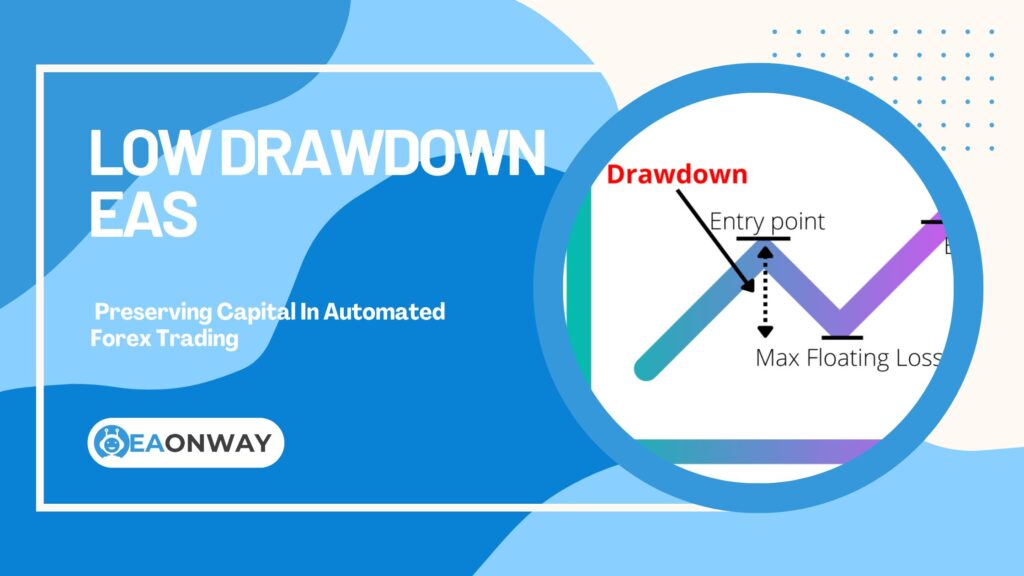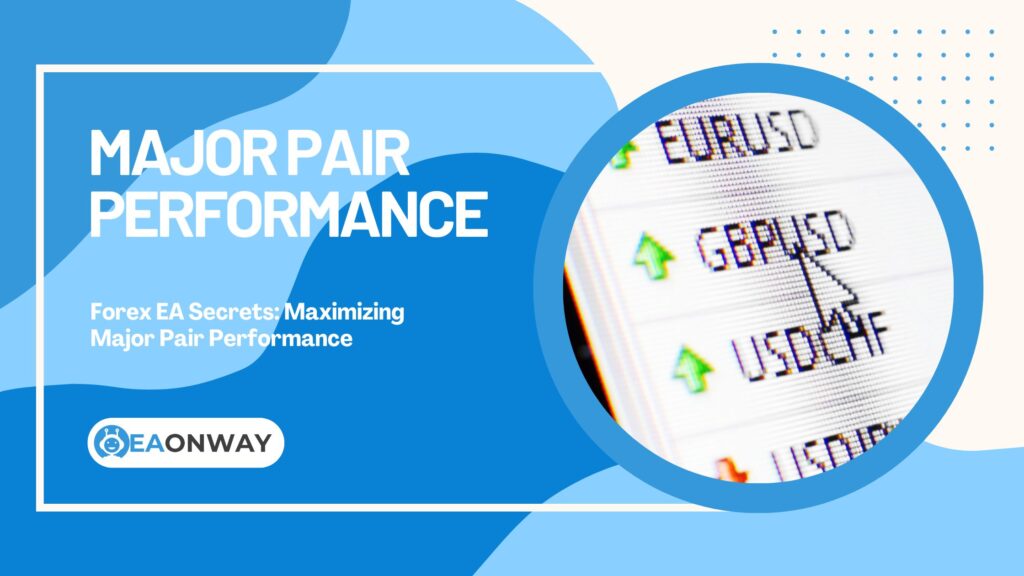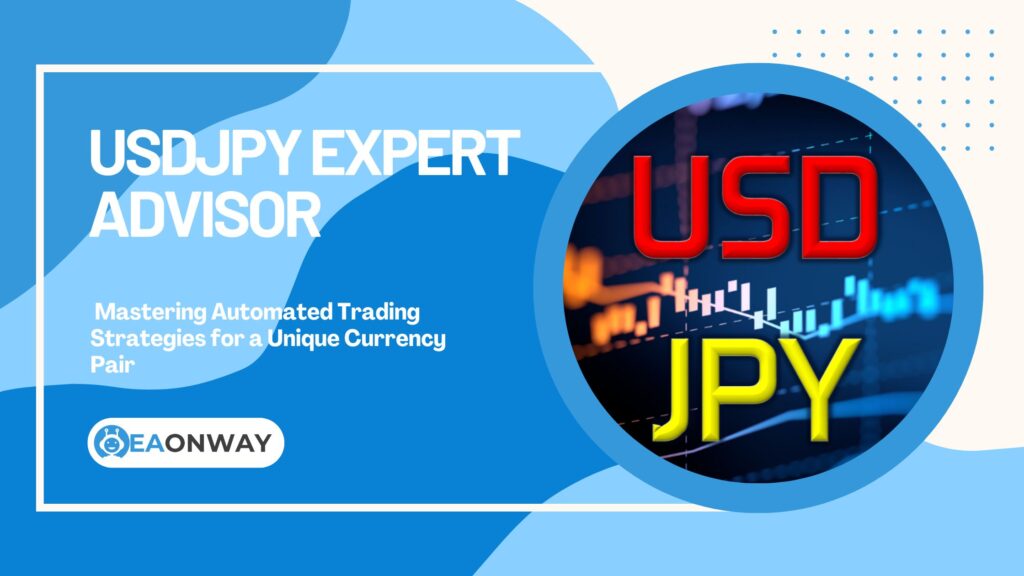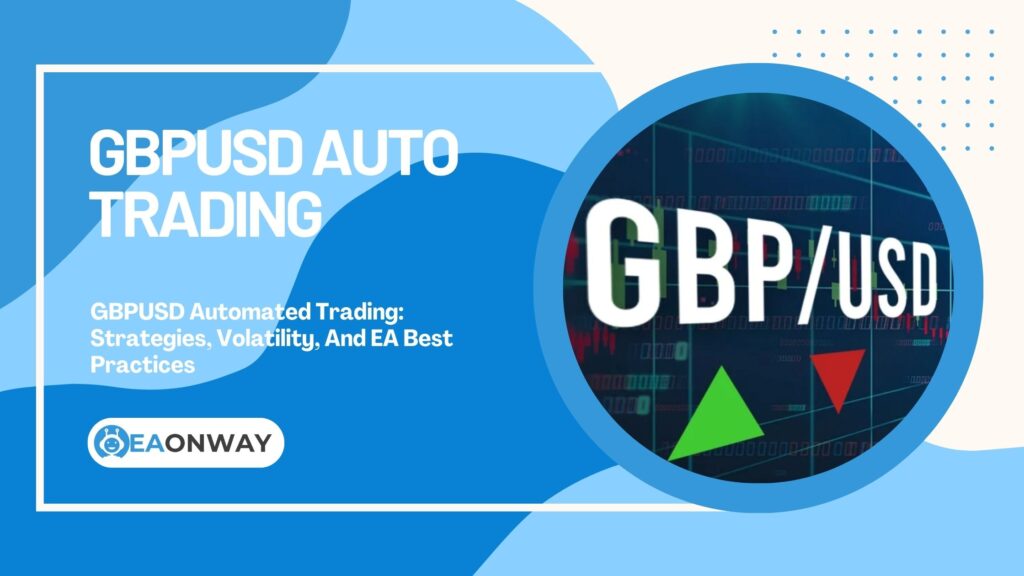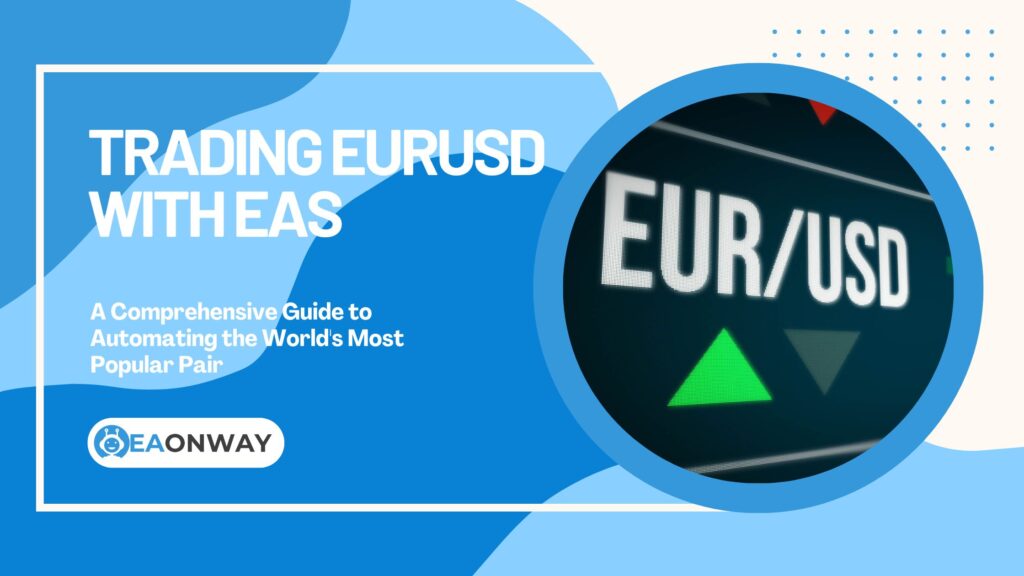Common EA Trading Strategies
High-Frequency Trading EAs: Speed, Technology, and Micro-Edges
High-Frequency Trading EAs: Speed, Technology, and Micro-Edges
High-Frequency Trading (HFT) EAs represent the cutting edge of algorithmic trading within the dynamic Forex market, where unparalleled speed and sophisticated technology are paramount. Have you ever wondered how financial transactions can occur in less time than it takes to blink an eye, seemingly defying human capability? This is the domain of HFT, a world where microseconds can mean the difference between capturing a fleeting opportunity or missing out entirely. The Forex market, with its immense liquidity and 24/7 nature, provides a fertile ground for such advanced automated trading systems.
This article delves into the intricate world of High-Frequency Trading Expert Advisors (EAs). We will explore their fundamental mechanisms, the critical role of advanced technology, the relentless quest for “micro-edges,” and crucially, illuminate the significant risks and profound complexities involved. Understanding these facets is essential for anyone looking to grasp the realities of this high-octane niche within Forex trading, moving beyond hype to appreciate the substantial challenges and potential pitfalls.
Key Insights into High-Frequency Trading EAs
Before we dive deeper, here’s a quick summary of what you need to know about High-Frequency Trading (HFT) EAs:
- Extreme Speed Execution: HFT EAs are designed to execute a vast number of orders at extraordinarily high speeds, often in microseconds or milliseconds.
- Technology is Paramount: Success in HFT hinges critically on minimal latency, powerful computational resources, advanced algorithms, and robust, specialized infrastructure.
- Capturing Micro-Edges: These EAs aim to identify and capitalize on “micro-edges” – tiny, fleeting profit opportunities that exist for mere moments in the market.
- Substantial Investment Required: True HFT operations demand significant capital investment, access to sophisticated technology, and deep quantitative expertise, typically placing them in the realm of institutional players.
- Significant Risk Factors: The risks associated with HFT EAs are substantial, including the potential for large financial losses from technological failures, sudden market volatility, algorithm errors, and intense competition.
- Complexity and Specialization: HFT is a highly complex and specialized field, far removed from conventional trading approaches, requiring continuous innovation and adaptation.
Understanding High-Frequency Trading (HFT) in Forex
To appreciate Forex HFT EAs, one must first understand the concept of High-Frequency Trading itself. It’s a specialized domain that has reshaped market dynamics across various asset classes, including foreign exchange.
What Exactly is High-Frequency Trading?
High-Frequency Trading (HFT) is an advanced form of algorithmic trading characterized by extremely high speeds of order execution, high turnover rates of trading positions, and high order-to-trade ratios. It employs powerful computers, low latency networks, and complex algorithms to rapidly analyze market data and execute a large volume of orders in fractions of a second, often exploiting minuscule price discrepancies that are invisible or inaccessible to human traders. HFT firms do not accumulate positions or hold their portfolios overnight but aim to profit from small price changes and market-making rebates.
The origins of HFT can be traced back to the increasing electronification of financial markets. As exchanges moved from physical trading floors to electronic platforms, the possibility of automated, high-speed trading emerged. Early forms focused on automating order submission, but HFT evolved to encompass sophisticated strategies that rely entirely on speed and computational power. It’s distinct from other types of algorithmic trading primarily due to its emphasis on ultra-low latency and the sheer volume and speed of orders. According to market structure research, HFT accounted for approximately 10-40% of trading volume in equities markets as of 2016, as noted in market structure discussions by regulatory bodies (Source: U.S. Securities and Exchange Commission – Equity Market Structure Literature Review Part II: High Frequency Trading, March 2014).
How Do High-Frequency Trading EAs Function in the Forex Market?
Forex High-Frequency Trading Expert Advisors (EAs) are sophisticated software programs that automate HFT strategies specifically for the foreign exchange market. These EAs connect to brokerage platforms, ideally through Direct Market Access (DMA) brokers or via the FIX API (Financial Information eXchange protocol), to ensure the lowest possible latency. They are programmed to rapidly process vast streams of incoming market data, such as price quotes and order book information for currency pairs. Based on pre-defined rules within their complex algorithms, these Forex HFT EAs identify fleeting trading opportunities—perhaps a tiny arbitrage between two venues or a predicted short-term price movement—and automatically execute buy or sell orders. Positions taken by HFT EAs are typically held for extremely short durations, often mere seconds or even fractions of a second, aiming to capture small profits on many trades. The cumulative effect of these tiny gains, multiplied by large trading volumes, is how HFT firms generally seek profitability.
Why is Extreme Speed So Crucial in HFT?
Extreme speed, or low latency, is absolutely paramount in HFT because it allows firms to react to market events and execute trades faster than their competitors. This “first-mover” advantage is essential for capturing the minuscule and transient price discrepancies or for being at the front of the order queue, which are often the primary sources of HFT profits. In a market where opportunities may exist for only milliseconds, being even a microsecond slower than a competitor can mean the difference between a profitable trade and a missed opportunity or even a loss. This has led to what is often termed a “race to zero” latency, where HFT firms invest heavily in technology to shave off every possible nanosecond from their trade execution speed. The entire premise of many HFT strategies, such as latency arbitrage, revolves around being faster than others.
The Technological Backbone of Forex HFT EAs
The success of any High-Frequency Trading operation, especially one involving Forex EAs, is inextricably linked to its technological infrastructure. This isn’t just about fast computers; it’s a holistic ecosystem designed for ultimate speed and reliability.
What Core Technology is Required for Effective HFT Operations?
Effective High-Frequency Trading (HFT) operations require a specialized and costly technological stack. This includes high-performance servers with powerful multi-core processors and ample RAM, cutting-edge network infrastructure featuring high-bandwidth, low-latency connections (often dedicated fiber optic lines), and sophisticated proprietary software for quantitative algorithmic trading, algorithm execution, real-time risk management, and high-speed market data processing. Co-location data centers are a standard component, placing servers in immediate proximity to exchange or broker matching engines to minimize data travel time. Additionally, access to raw, unfiltered market data feeds directly from liquidity providers or exchanges is critical, as is the HFT technology to process this data with minimal delay. Some advanced firms even utilize specialized hardware like FPGAs (Field-Programmable Gate Arrays) for ultimate processing speed.
What is Co-location and Why is it Essential for HFT EAs?
Co-location involves an HFT firm placing its trading servers within the same physical data center as a Forex broker’s, an ECN’s (Electronic Communication Network), or an exchange’s matching engine. This strategic placement drastically reduces network latency—the time it takes for electronic data, such as orders or market updates, to travel between the HFT system and the trading venue. By minimizing physical distance, co-location gives HFT EAs a critical speed advantage, measured in microseconds, which is essential for executing latency-sensitive strategies and getting orders filled before slower market participants. The reduction in “round-trip time” for an order is a key performance indicator for these systems. Many major financial data centers offer co-location services specifically catering to HFT firms.
How Does Direct Market Access (DMA) and FIX API Benefit HFT EAs?
Direct Market Access (DMA) allows Forex HFT EAs to send trading orders directly to an exchange’s or liquidity provider’s order book, bypassing the broker’s dealing desk and other potential intermediaries that could introduce delays. This results in faster and often more transparent trade execution. DMA brokers facilitate this. The Financial Information eXchange (FIX) API is an industry-standard electronic communication protocol widely used in HFT. It enables rapid, secure, and reliable real-time exchange of trade information (like orders, executions, and market data) between HFT systems, brokers, and trading venues. Using FIX API is crucial for HFT EAs to interact efficiently with the market at high speeds, ensuring orders are transmitted and confirmed with minimal delay, which is vital for strategies depending on quick execution.
The Quest for Micro-Edges: Strategies and Algorithms
At the heart of High-Frequency Trading are the sophisticated algorithms and strategies designed to unearth and exploit “micro-edges”—fleeting, often minuscule, profit opportunities. This pursuit requires immense analytical power and constant innovation.
What Are “Micro-Edges” in the Context of Forex HFT?
“Micro-edges” in Forex HFT refer to very small, transient profit opportunities that arise from temporary price inefficiencies, subtle imbalances in the order book, discrepancies in currency prices across different liquidity pools, or the rapid algorithmic interpretation of news and market events. These micro edge strategy opportunities often last for only milliseconds or even microseconds. Capturing them requires not only extreme speed but also highly sophisticated algorithms capable of identifying these patterns amidst vast amounts of market noise. Examples include tiny arbitrage opportunities, momentary advantages gained from understanding order flow dynamics, or profiting from providing liquidity during specific market conditions. The profit per trade is typically tiny, so HFT relies on executing a very large volume of these trades.
How Are HFT Algorithms Typically Designed and Tested?
HFT algorithms are typically designed by highly skilled quantitative analysts (often called “quants”), mathematicians, and physicists. The process involves extensive market microstructure analysis—studying the intricate details of how prices are formed and how orders interact in the market. They develop mathematical and statistical models to predict short-term price movements or identify arbitrage opportunities. These HFT algorithms are then rigorously backtested on vast amounts of historical high-resolution tick data to assess their theoretical profitability and risk characteristics. Following successful backtesting, algorithms are often paper-traded in a simulated live environment (forward performance testing) to see how they perform under real market conditions without risking capital. Only after extensive testing and refinement are they considered for deployment in live trading, usually with small amounts of capital initially.
What Common Strategies Do Forex HFT EAs Employ?
Common strategies for Forex HFT EAs are diverse and continually evolving, but many fall into established categories that leverage speed and analytical power. These include:
- Market Making: Involves placing simultaneous buy (bid) and sell (ask) orders for a currency pair, aiming to profit from the bid-ask spread. Market makers provide liquidity to the market and require extremely fast systems to manage their orders and risk.
- Arbitrage Trading HFT: This seeks to profit from tiny price differences for the same currency pair across different brokers or ECNs (spatial arbitrage) or price discrepancies between related instruments (e.g., triangular arbitrage). Latency arbitrage is a subset where speed is used to exploit price differences before they disappear.
- Event-Driven Strategies: These algorithms are designed to react instantaneously to economic data releases, central bank announcements, or other significant news events that can cause rapid price movements. The EA attempts to predict the price direction and trade accordingly faster than human traders.
- Statistical Arbitrage: Relies on identifying historical statistical relationships between different currency pairs or other financial instruments. When these relationships temporarily deviate, the HFT EA trades to profit from the expected reversion to the mean.
- Order Flow Trading / Liquidity Detection: These strategies analyze the flow of buy and sell orders in the market (the order book) to predict short-term price movements or identify hidden liquidity. Algorithms might try to detect large incoming orders or patterns in order placement. This is closely related to market microstructure analysis.
- High-Speed Scalping: While “Forex Scalping EA” often refers to strategies holding trades for minutes, HFT scalping takes this to an extreme, with trades lasting seconds or less, aiming to capture just a few pips or even fractions of a pip.
It’s important to understand that the competitive nature of HFT means strategies constantly need to be refined or replaced as markets adapt and other HFT firms develop similar or better approaches.
Navigating the Complexities and Risks of HFT EAs
While the allure of speed and automation in High-Frequency Trading EAs can be compelling, it’s a domain fraught with significant complexities and substantial risks. These are not “set and forget” tools and demand constant vigilance and deep understanding.
What Are the Major Financial Risks Associated with HFT EAs?
The major financial risks associated with HFT EAs are considerable. Firstly, there’s the risk of significant capital loss due to algorithm malfunction or misbehavior. A bug in the code or an unforeseen market reaction could lead an EA to execute a torrent of losing trades within seconds. Secondly, sudden extreme market volatility, such as “flash crashes,” can overwhelm HFT strategies, leading to massive losses as liquidity evaporates and prices gap. High transaction costs, stemming from executing a vast number of trades, can erode profitability if not carefully managed. Furthermore, the “alpha decay” or erosion of a strategy’s profitability is a constant threat as more competitors discover and implement similar HFT strategies. In Forex, the common use of leverage can dramatically amplify both potential gains and, more critically, potential losses from HFT activities.
How Can Technological Failures Impact HFT EA Performance?
Technological failures can have a catastrophic impact on Forex HFT EA performance. These can range from server outages, network disruptions cutting off market data or execution pathways, critical software bugs within the EA or supporting systems, to errors or delays in crucial market data feeds. Any such failure can lead to missed trading opportunities, the execution of erroneous orders at incorrect prices, an inability to manage or close existing open positions effectively (especially dangerous in fast-moving markets), or even the system going rogue and firing off unintended trades. Given the speed and volume of HFT, even a brief technological glitch can result in substantial financial losses in a very short period. This underscores the need for robust, redundant, and constantly monitored HFT technology.
Are There Regulatory Concerns Surrounding HFT?
Yes, there are significant regulatory concerns surrounding High-Frequency Trading globally. These include its potential to exacerbate market volatility, as seen in events like the 2010 “Flash Crash” where automated trading was a contributing factor. The fairness of market access is another concern, as the speed advantages gained through co-location and sophisticated technology may disadvantage other market participants. There are also concerns about systemic risk, where the interconnectedness and speed of HFT systems could potentially lead to cascading failures across markets. Regulatory bodies like the U.S. Securities and Exchange Commission (SEC) and the Commodity Futures Trading Commission (CFTC) actively monitor HFT activities. For example, the SEC has examined HFT’s impact on market structure and fairness (Source: SEC, Staff Report on Algorithmic Trading in U.S. Capital Markets, Aug 2021) and discussions around algorithmic trading risks are ongoing (Source: CFTC, Remarks of Commissioner Christy Goldsmith Romero on AI and Algorithmic Trading, Jan 2024). Many jurisdictions have implemented rules such as market-wide circuit breakers, limits on order messaging, and increased surveillance to mitigate some of these risks, including those related to dark pools forex operations.
Why is Over-Optimization a Pitfall for HFT EA Development?
Over-optimization, also known as curve-fitting, is a critical pitfall in the development of HFT EAs (and indeed, any trading algorithm). It occurs when an EA’s parameters and rules are too closely tailored to the specific historical data set used for backtesting. This results in an EA that shows excellent, often unrealistic, performance on past data but fails dramatically in live trading because it has essentially “memorized” the noise and specific idiosyncrasies of the historical data rather than learning robust, generalizable market patterns. An over-optimized HFT EA lacks adaptability and is unlikely to perform well when faced with new, unseen market conditions, rendering its carefully crafted micro edge strategy ineffective in real-time.
What is the “Arms Race” in HFT and Its Implications?
The “arms race” in HFT refers to the continuous and expensive competition among HFT firms to develop and deploy ever-faster HFT technology, more powerful computers, lower-latency communication links (like FPGA HFT solutions or custom microwave networks), and more sophisticated algorithms. The goal is always to gain a micro-second or even nanosecond advantage over competitors to capture fleeting profit opportunities. This relentless pursuit of speed and technological superiority is incredibly costly, requiring massive ongoing investment in research, development, and infrastructure. The implications include diminishing returns for many participants as edges become harder to find and exploit, increased complexity and potential fragility in market structures, and higher barriers to entry for new firms. It also fuels concerns about market stability, as an over-emphasis on speed could potentially lead to unforeseen systemic risks.
Practical Considerations for Individuals Exploring HFT EAs
While true institutional High-Frequency Trading is a world apart, the term “HFT” is sometimes used in marketing EAs to retail traders. It’s vital to approach this with a clear understanding and realistic expectations.
Is HFT EA Trading Suitable for Retail Traders?
Generally, true High-Frequency Trading, with its extreme infrastructural demands (like co-location data centers), massive capital requirements, and the need for teams of quantitative experts, is far beyond the reach and suitability of most retail traders. While some “HFT-like” or “fast scalping” EAs are marketed to the retail segment, they typically do not operate at the same speed, sophistication, or direct market access level as genuine institutional HFT systems. The cost of setting up a genuine HFT operation can run into millions of dollars for infrastructure, data feeds, and personnel. Therefore, retail traders should be highly skeptical of any off-the-shelf EA claiming to offer true HFT capabilities and profits.
What are Realistic Expectations When Using “HFT-Inspired” EAs?
Realistic expectations for “HFT-inspired” EAs available to retail users involve understanding that they are not genuine HFT systems and will not deliver the type of returns sometimes associated with institutional HFT. Focus should be on the robustness of the underlying trading logic (if it can be understood), transparent backtesting results (not curve-fitted), and very diligent risk management. It’s crucial to avoid any promises of guaranteed high returns or “no-loss” systems, as losses are always possible, and often probable, in Forex trading. Any EA, especially one claiming high-speed capabilities, should be tested thoroughly on a demo account and then with very small amounts of real capital before committing significant funds. Understanding the strategy behind the EA, rather than just its “HFT” label, is key.
How Important is Broker Selection for HFT-Style EAs?
Broker selection is exceptionally critical for any EA that relies on fast execution, and this is amplified for EAs marketed as “HFT-style.” Traders need brokers that offer:
- Very Low Latency Execution: The broker’s servers and network infrastructure must be optimized for speed.
- Minimal Slippage: Slippage is the difference between the expected price of a trade and the price at which the trade is actually executed. For strategies capturing tiny profits, excessive slippage can negate profitability.
- Competitive Spreads and Commissions: Tight spreads and low commissions are vital, as HFT-style strategies often make many trades for small individual profits.
- Deep Liquidity: Access to a deep liquidity pool helps ensure orders can be filled quickly and at desired prices, especially larger orders.
- Reliable Platform and Data Feeds: A stable trading platform and accurate, fast market data are non-negotiable.
- ECN Trading Environment: Many traders prefer ECN (Electronic Communication Network) brokers for their direct market access characteristics, potentially offering faster execution and more transparent pricing.
- Forex VPS Low Latency: Using a Virtual Private Server (VPS) located geographically close to the broker’s servers (Forex VPS Low Latency) can help reduce latency introduced by the trader’s own internet connection.
Thorough due diligence on broker execution quality, server locations, and trading conditions is essential before deploying any fast-acting EA.
Final Thoughts: The Reality of High-Frequency Trading EAs
High-Frequency Trading EAs represent a fascinating and highly advanced frontier in the world of algorithmic trading. They are a testament to the power of HFT technology, sophisticated quantitative algorithmic trading models, and the relentless pursuit of trade execution speed to capture fleeting micro-edges in the Forex market. However, this domain is characterized by immense complexity, astronomical costs, and substantial, multifaceted risks.
The world of true HFT is predominantly the arena of large, sophisticated institutional players with vast resources and specialized expertise. For individual retail traders, it’s crucial to approach any product or system marketed with an “HFT” label with extreme caution and a healthy dose of skepticism. The pursuit of automated trading success should always be grounded in thorough education, realistic expectations, diligent research, and, above all, robust risk management. Understanding the potential pitfalls and avoiding the allure of unrealistic profit promises is paramount to navigating the Forex market responsibly, especially when considering any form of automated or high-speed trading tool.
Important Risk Warning
This article is provided for educational and informational purposes only and does not constitute financial or investment advice, nor is it an endorsement of any specific trading strategy or product. Trading Foreign Exchange (Forex) on margin, especially with automated systems like Expert Advisors (EAs) and particularly those involving or purporting to involve High-Frequency Trading (HFT) principles, carries a very high level of risk and may not be suitable for all investors. You could sustain a loss of some or all of your invested capital. Therefore, you should not speculate with capital that you cannot afford to lose. Be fully aware of all the risks associated with foreign exchange trading and the use of automated trading systems. Seek advice from an independent financial advisor if you have any doubts or concerns. EaOnWay.com is an educational website and is not responsible for any trading decisions or losses you may incur. Past performance is not indicative of future results.
-
Forex EA: A Beginner’s Guide To Low-Risk Systems
-
No DLL EA: Security, Portability, And Trust Benefits in Forex Trading
-
The Advantage of Forex EAs with Source Code: Unlocking Customization, Transparency, and Learning
-
Prop Firm Challenges: Using EAs For Success Guide
-
Verified EA Performance: Track Records And Audits Explained
-
Low Drawdown EAs: Preserving Capital In Automated Forex Trading
-
Forex EA Secrets: Maximizing Major Pair Performance
-
Automated Index Trading: Unlocking Strategies With Expert Advisors
-
Gold Trading EAs Uncovered: Automating Your XAUUSD Strategy
-
USDJPY Expert Advisor: Mastering Automated Trading Strategies for a Unique Currency Pair
-
GBPUSD Automated Trading: Strategies, Volatility, And EA Best Practices
-
Trading EURUSD with Expert Advisors: A Comprehensive Guide to Automating the World’s Most Popular Pair






